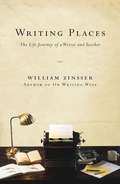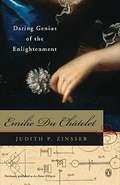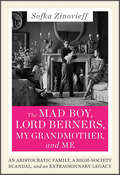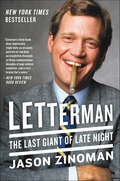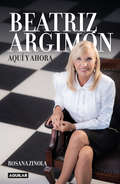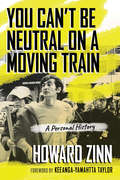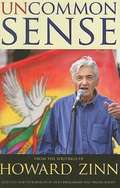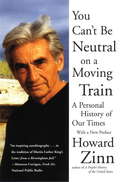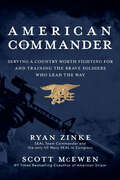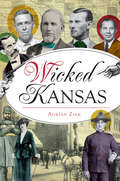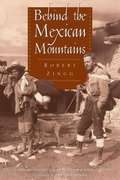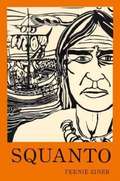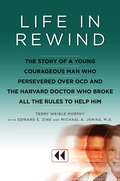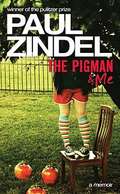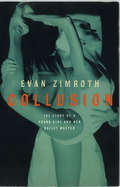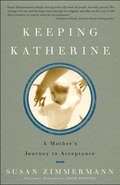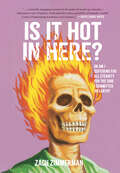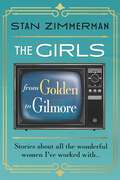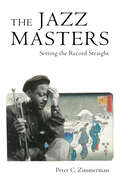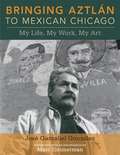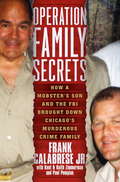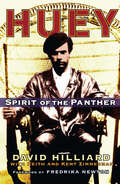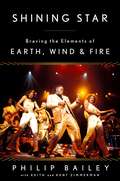- Table View
- List View
Writing Places
by William ZinsserWilliam Zinsser's journey to all the places where he has done his writing and his teaching begins in 1946, with his first job at the New York Herald Tribune, a community of legendary journalists and oddballs, in its postwar years of glory. Next came 11 years of freelance writing for magazines, mainly covering the turbulent 1960s for Life, a period that found the writer and his typewriter perched in many unusual locations.After that he spent a decade at Yale University, where his office as master of Branford College was beneath a 44-bell carillon. At Yale he originated his famous "nonfiction workshop," which would launch the careers of many exceptional writers and editors. That course led to his classic book, On Writing Well, which he wrote during the summer of 1974 in a crude shed in Connecticut. In this new memoir Zinsser recalls the processes that went into creating that original edition and revising it over the next 30 years to keep pace with changes in the language and culture of America. His journey brings him back to New York City and to writing articles and books in quirky rented offices, one of which had a fire pole.Written with humor and with gratitude for a lifetime of change and self-discovery, relishing a rich cast of characters that ranges from Yale's president Kingman Brewster to the actor Peter Sellers and the gonzo journalist Hunter S. Thompson, Writing Places never loses its anchor in the craft of writing--how writing is taught, learned and finally brought to a high level of enjoyment.
Emilie Du Chatelet
by Judith P. ZinsserThe captivating biography of the French aristocrat who balanced the demands of her society with passionate affairs of the heart and a brilliant life of the mind Although today she is best known for her fifteen-year liaison with Voltaire, Gabrielle Emilie le Tonnelier de Breteuil, Marquise Du Châtelet (1706-1749) was more than a great man's mistress. After marrying a marquis at the age of eighteen, she proceeded to fulfill the prescribed-and delightfully frivolous-role of a French noblewoman of her time. But she also challenged it, conducting a highly visible affair with a commoner, writing philosophical works, and translating Newton's Principia while pregnant by a younger lover. With the sweep of Galileo's Daughter, Emilie Du Châtelet captures the charm, glamour, and brilliance of this magnetic woman.
The Mad Boy, Lord Berners, My Grandmother, and Me: An Aristocratic Family, a High-Society Scandal, and an Extraordinary Legacy
by Sofka ZinovieffLike The Bolter and Portrait of a Marriage, this beguiling, heady tale of a scandalous ménage à trois among England's upper classes combines memoir and biography to re-create an unforgettably decadent world.Among the glittering stars of British society, Sofka Zinovieff's grandparents lived and loved with abandon. Robert Heber-Percy was a dashing young man who would rather have a drink than open a book, so his involvement with Jennifer Fry, a gorgeous socialite famous for her style and charm, was not surprising. But by the time Robert met and married Jennifer, he had already been involved with a man—Gerald, Lord Berners—for more than a decade.Stout, eccentric and significantly older, Gerald was a composer, writer and aesthete—a creative aristocrat most at home in the company of the era's best and brightest minds. He also owned one of Britain's loveliest stately homes, Faringdon House, in Oxfordshire, which under his stewardship became a beacon of sybaritic beauty. Robert and Gerald made an unlikely couple, especially because they lived together at Faringdon House when homosexuality was illegal. And then a pregnant Jennifer moved into Faringdon in 1942, creating a formidable ménage à trois.In this gorgeous, entertaining narrative of bohemian aristocracy, Sofka Zinovieff probes the mysteries of her grandparents and the third man in their marriage: Gerald, the complex and talented heir to a legendary house, its walls lined with priceless art and its gardens roamed by a bevy of doves, where he entertained everyone from Igor Stravinsky to Gertrude Stein. What brought Robert and Jennifer together under his roof, and why did Jennifer stay—and marry Robert? Blending memoir and biography in her quest to lay old ghosts to rest, Zinovieff pieces together the complicated reality behind the scandals of revelry and sexuality. The resulting story, defined by keen insight, deep affection and marvelous wit, captures the glory and indulgence of the age, and explores the many ways in which we have the capacity to love.
Letterman: The Last Giant of Late Night
by Jason ZinomanNew York Times comedy critic Jason Zinoman delivers the definitive story of the life and artistic legacy of David Letterman, the greatest television talk show host of all time and the signature comedic voice of a generation.In a career spanning more than thirty years, David Letterman redefined the modern talk show with an ironic comic style that transcended traditional television. While he remains one of the most famous stars in America, he is a remote, even reclusive, figure whose career is widely misunderstood. In Letterman, Jason Zinoman, the first comedy critic in the history of the New York Times, mixes groundbreaking reporting with unprecedented access and probing critical analysis to explain the unique entertainer’s titanic legacy. Moving from his early days in Indiana to his retirement, Zinoman goes behind the scenes of Letterman’s television career to illuminate the origins of his revolutionary comedy, its overlooked influences, and how his work intersects with and reveals his famously eccentric personality. Zinoman argues that Letterman had three great artistic periods, each distinct and part of his evolution. As he examines key broadcasting moments—"Stupid Pet Tricks" and other captivating segments that defined Late Night with David Letterman—he illuminates Letterman’s relationship to his writers, and in particular, the show’s co-creator, Merrill Markoe, with whom Letterman shared a long professional and personal connection.To understand popular culture today, it’s necessary to understand David Letterman. With this revealing biography, Zinoman offers a perceptive analysis of the man and the artist whose ironic voice and caustic meta-humor was critical to an entire generation of comedians and viewers—and whose singular style ushered in new tropes that have become clichés in comedy today.
Beatriz Argimón: Aquí y ahora
by Rosana ZinolaA un año de su asunción como primera vicepresidenta de Uruguay, una aproximación a la mujer política y las circunstancias que la llevaron hasta allí. Beatriz Argimón encarna en buena medida las luchas y los desvelos de tantas mujeres que intentan abrirse paso a como dé lugar. A un año de su asunción como primera vicepresidenta electa de Uruguay, este libro es una aproximación a su intimidad, a su ser político y a las circunstancias que la llevaron hasta aquí. A partir de entrevistas exclusivas concedidas para esta publicación, este retrato integral permite conocer quién es verdaderamente la primera mujer en ocupar este cargo, y las inquietudes que corren por sus venas. La niña que escuchaba de sus abuelas historias de lanceras de Aparicio Saravia; la estudiante que acompañó a su padre al ser destituido por la dictadura y encontró un propósito en la actividad sindical; la llama de Wilson y la decisión de pasarse a la carrera política recién recibida; su trayecto en las estructuras partidarias topándose con lo mejor y lo peor de la vida política y sus peajes; su papel en la agenda de derechos y reivindicación de la mujer y de los más vulnerables, con las satisfacciones y los costos que esto le implicó; cómo llega a ser candidata y los sinsabores de la campaña; su vocación negociadora y el rol que desempeña hoy; su vínculo con el presidente; su quehacer cotidiano; los momentos más críticos del primer año de gobierno; su pensamiento y los desvelos de cara al futuro... El libro se completa con fotografías que recorren su vida y sus afectos.
You Can't Be Neutral on a Moving Train: A Personal History
by Howard Zinn Keeanga-Yamahtta TaylorHoward Zinn, author of A People's History of the United States, tells his personal stories about more than thirty years of fighting for social change, from teaching at Spelman College to recent protests against war.A former bombardier in WWII, Zinn emerged in the civil rights movement as a powerful voice for justice. Although he's a fierce critic, he gives us reason to hope that by learning from history and engaging politically, we can make a difference in the world.
Uncommon Sense from the Writings of Howard Zinn
by Howard ZinnThis volume collects short quotations from across the works of Howard Zinn, the leftist American historian perhaps best known for his A People's History of the United States. The quotations generally read as aphorisms (e. g. "History is not inevitably useful. It can bind us or free us." and "At its worst, war has been mass slaughter without even the saving grace of a definable social goal.") that together provide a broad overview of Zinn's thinking on (citing the chapter titles): history, government, war and peace, class, racism and resistance, law and justice, Marxism and anarchism, and taking action.
You Can't Be Neutral on a Moving Train
by Howard ZinnBeacon Press is proud to publish a new edition of the classic memoir by one of our most lively, influential, and engaged teachers and activists. Howard Zinn, author of A People's History of the United States, tells his personal stories about more than thirty years of fighting for social change, from teaching at Spelman College to recent protests against war.A former bombardier in WWII, Zinn emerged in the civil rights movement as a powerful voice for justice. Although he's a fierce critic, he gives us reason to hope that by learning from history and engaging politically, we can make a difference in the world.
American Commander: Serving a Country Worth Fighting For and Training the Brave Soldiers Who Lead the Way
by Ryan Zinke Scott McEwenIn recent years, the world has learned just what is required to bravely serve America through the navy&’s most elite SEAL Team. Now, for the first time, we hear from their commander.For more than half a decade, Ryan Zinke was a commander at the most elite SEAL unit. A 23-year veteran of the US Navy SEALs, Zinke is a decorated officer and earned two Bronze Stars as the acting commander of Joint Special Forces in Iraq. Zinke trained and commanded many of the men who would one day run the covert operations to hunt down Osama bin Laden and save Captain Phillips (Maersk Alabama). He also served as mentor to now famous SEALs Marcus Luttrell (Lone Survivor) and Chris Kyle (American Sniper).Written with #1 New York Times bestselling co-author of American Sniper, Scott McEwen, American Commander will offer readers the hard-hitting, no-nonsense style the SEALs are known for.When Zinke signs with the US Navy he turns his sights on joining the ranks of the most elite fighting force, the SEALs. He eventually reaches the top of the SEAL Teams as an assault team commander. Zinke shares what it takes to train and motivate the most celebrated group of warriors on earth and then send them into harm&’s way. Through it, he shares his proven problem-solving approach: Situation, Mission, Execution, Command and Control, and Logistics.American Commander also covers Zinke&’s experience in running for Montana&’s sole seat in the United States Congress. Zinke&’s passion for his country shines as he conveys his vision to revitalize American exceptionalism. Scott McEwen and Ryan Zinke take readers behind the scenes and into the heart of America&’s most-feared fighting force. American Commander will inspire a new generation of leaders charged with restoring a bright future for our children&’s children.
Wicked Kansas (Wicked)
by Adrian ZinkKansans like to think of their state as a land of industrious, law-abiding and friendly people, and for the most part they are correct. But its history has many tales of murders, cons, extrajudicial killings and other crimes. Its restive frontier attracted menacing characters, such as a cowboy who murdered a man for snoring, the serial-killing Bender family and the train-robbing James-Younger Gang. Although the area was eventually settled, the scandals did not cease. Learn about how a quack doctor nearly won the governorship, a decommissioned nuclear missile silo housed the largest LSD manufacturing operation in American history and more. Author Adrian Zink explores the salacious side of Kansas history in these wild and degenerate stories.
Behind the Mexican Mountains
by Robert ZinggIn 1930, anthropologists Robert Zingg and Wendell Bennett spent nine months among the Tarahumara of Chihuahua, Mexico, one of the least acculturated indigenous societies in North America. Their fieldwork resulted in The Tarahumara: An Indian Tribe of Northern Mexico (1935), a classic ethnography still familiar to anthropologists. In addition to this formal work, Zingg also penned a personal, unvarnished travelogue of his sojourn among the Tarahumara. Unpublished in his lifetime, Behind the Mexican Mountains is now available in print for the first time.
Squanto
by Feenie ZinerA biography of the Wampanoag Indian who, after living in England and Spain, returned to New England in 1619 and befriended the Pilgrims when they settled in Plymouth.
Life in Rewind
by Edward E. Zine Terry Weible Murphy Michael A. Jenike"Time equals progression-- progression equals death." The equation is logical. But few of us think of each moment and each physical movement as comprising a path to our certain end. Surely such torture would drive us mad. But for Ed Zine, who suffers from a debilitating form of obsessive-compulsive disorder (OCD), this statement is a mantra that holds him prisoner--figuratively and literally. Ed's OCD tells him, illogically, that if going forward in time moves him closer to death, reversing the action will carry him away from it, and if he can hold back the progression of time he will not age. If he doesn't age, the people he loves will never die. This obsession, triggered by the horrific experience of having secretly witnessed his mother's death at the age of eleven, keeps him trapped in a nightmare of perpetual rewinding rituals. Walking from his bed to the bathroom takes seven to ten hours and 16,384 precise, but necessary, movements forward and backward, with each step and turn having potentially dire, even fatal, consequences--or so his OCD convinces him. The tens of thousands of exacting rituals stop him from showering altogether for two years, as he lives isolated in the chaos of a basement littered with refuse and human waste. But the filth in which Ed lives and the placement of the things he hoards--from a tiny ball of lint to an unopened bar of soap to an unwashed pair of sweatpants--all represent important placeholders of time in the grand scheme of irrationally keeping his loved ones alive and well. It would be a full year from their first meeting before Ed would come to fully trust world-renowned OCD specialist, Harvard professor, and decorated Vietnam War hero Michael Jenike enough to allow him to enter the dark prison created by his isolating obsession. Breaking the rules of traditional medicine, Michael, who was carrying emotional scars from his own traumatic past, from the loss of too many young men Ed's age with whom he served in the war, would travel many long hours from Boston to Ed's home, and spend countless hours treating him. Finally, with all treatments exhausted, and all hope lost, the unconditional friendship between Ed and Michael remains. The bond of honor that intertwines their lives enables Ed to use his amazing mind to break down OCD and heal himself as a way to reward Dr. Jenike for his compassion.
The Pigman and Me
by Paul ZindelAn account of Paul Zindel's teenage years on Staten Island, when his life was enriched by finding his own personal pigman, or mentor.
Collusion
by Evan ZimrothFrom the vantage point of "real life" (as dancers say), Collusion tells the story of a young girl's initiation into the disciplined, exalting world of classical ballet and into a secret love relationship with F., the ballet master whom she adored. "Do you want to be a great dancer?" F. had asked her when she was twelve. She did. And so Collusion tells of how she gave up ordinary life--family, boyfriends, hamburgers, homework, and pop music--for a life dedicated to the promise of artistry. At the center of that new life was always the figure of F.--ironic, moody, demanding, quixotically generous or withholding--who could control her with a sarcastic comment or the flash of his cane across her thigh, but also with the lyrical beauty of his classes and the vision of herself in a perfect arabesque. F. was the first man to partner her, and the first to teach her that love can come in strange forms: in the airborne lifts of Les Sylphides, in brilliant pirouettes, and in measured violence. Collusion describes the secret life of ballet. It is a life in which "normal" values are reversed. Brutality is seen as a gift, fear as devotion, sadism (rightly, in this case) as love. Free of conventional moral judgments, Collusion tells of possession and surrender, of power and submission, of the bond between a young girl and an older man. In spare, emotionally resonant prose, award-winning poet and novelist Evan Zimroth unfolds a mesmerizing story of artistic ambition, power, and love in an unforgettable memoir of adolescence. Collusion portrays a real relationship, one that society dares not speak of, and it does so with admirable honesty and sensitivity.
First Great Triumph: How Five Americans Made Their Country a World Power
by Warren ZimmermannAmerican history around 1900 with a focus on five figures.
Keeping Katherine: A Mother's Journey to Acceptance
by Susan ZimmermannWhat happens when you have life on a string and then everything changes? The author tells the story of life with her daughter, Katherine, who developed Rett Syndrome without warning. This is the story of a soul-searching journey through grief, loss, hope, anger, and despair to a place of unconditional love.
Sandinista: Carlos Fonseca and the Nicaraguan Revolution
by Matilde Zimmermann"A must-read for anyone interested in Nicaragua--or in the overall issue of social change. "--Margaret Randall, author of SANDINO'S DAUGHTERS and SANDINO'S DAUGHTERS REVISITED Sandinista is the first English-language biography of Carlos Fonseca Amador, the legendary leader of the Sandinista National Liberation Front of Nicaragua (the FSLN) and the most important and influential figure of the post-1959 revolutionary generation in Latin America. Fonseca, killed in battle in 1976, was the undisputed intellectual and strategic leader of the FSLN. In a groundbreaking and fast-paced narrative that draws on a rich archive of previously unpublished Fonseca writings, Matilde Zimmermann sheds new light on central themes in his ideology as well as on internal disputes, ideological shifts, and personalities of the FSLN. The first researcher ever to be allowed access to Fonseca's unpublished writings (collected by the Institute for the Study of Sandinism in the early 1980s and now in the hands of the Nicaraguan Army), Zimmermann also obtained personal interviews with Fonseca's friends, family members, fellow combatants, and political enemies. Unlike previous scholars, Zimmermann sees the Cuban revolution as the crucial turning point in Fonseca's political evolution. Furthermore, while others have argued that he rejected Marxism in favor of a more pragmatic nationalism, Zimmermann shows how Fonseca's political writings remained committed to both socialist revolution and national liberation from U. S. imperialism and followed the ideas of both Che Guevara and the earlier Nicaraguan leader Augusto Csar Sandino. She further argues that his philosophy embracing the experiences of the nation's workers and peasants was central to the FSLN's initial platform and charismatic appeal.
Is It Hot in Here (Or Am I Suffering for All Eternity for the Sins I Committed on Earth)?
by Zach ZimmermanIn this debut collection of essays, lists, musings, and quips, New York-based comedian Zach Zimmerman delicately walks the fine line between tear-jerking and knee-slapping, and does so with aplomb. <p><p> In this laugh-and-cry-out-loud, memoir-esque exploration of selfhood, Zimmerman dives into the pros and cons of retiring a Bible-Belt-dwelling, meat-eating, God-fearing identity in exchange for a new, metropolitan lease on life—one of vegetarianism, atheism, queerness, and humor. Whether learning to absolve instilled religious guilt or reminiscing over Tinder dates gone horribly wrong, this book is a candid and hysterical look at one person's journey toward making peace with the past and seeking hope in the future. <p><p> HILARIOUS WRITING: The stories featured in this collection are an uproarious read with a strong and established tone of voice. Featuring pieces that were originally published in the New Yorker, Is It Hot in Here (Or Am I Suffering for All Eternity for the Sins I Committed on Earth)? is a literary gem. <p><p> RELEVANT AND INCLUSIVE: Zimmerman navigates obstacles in the queer community with essays that are not only humorous and heartfelt, but also act as guiding anecdotes for young, queer community members. <p><p> ESTABLISHED AUTHOR AND COMEDIAN: Zimmerman has written dozens of New Yorker humor pieces and essays, a Billboard Top Ten comedy album that debuted at #1, and has been featured in New York Magazine, The New York Times, TimeOut, Vulture, and more.
The Girls: From Golden to Gilmore
by Stan Zimmerman&“...the very definition of a page-turner. READ THIS BOOK!&” – Colin Mochrie, &“Whose Line is It Anyway?,&” &“Hyprov&”The Girls: From Golden to Gilmore is the story of Stan Zimmerman, a gawky Jewish boy who dreamed of becoming a wildly successful actor, rich enough to build his own mansion in the Hollywood Hills. While the actor part didn't quite pan out, Stan found success as a writer, producer, director, and playwright, working on such shows as The Golden Girls, Roseanne, and Gilmore Girls. Growing up in a small suburb of Detroit, Michigan, Stan was surrounded by three strong, intelligent women-his mother, his grandmother, and his sister-all of whom supported his imagination and creativity. Instead of playing outside, he spent time in his basement directing and acting in plays with the neighborhood kids. At seven-and-a-half years old, he was the youngest student accepted into a prestige summer theater school program. After high school, he was awarded a work/study scholarship to NY/Circle in the Square, where he met his first serious boyfriend and became Andy Warhol's unwitting photo subject one night at Studio 54. He also met Jim Berg, a journalism student at NYU's University Without Walls, forming a writing partnership that has continues to this day. partnership to this day. Their latest project is naturally an all-star, female ensemble Christmas comedy movie for Lifetime! Throughout his life, most of Stan's friendships have been with females. He credits those friendships and the women in his family with his ability to connect with creative women who have played a part in his career success. Accompanied by journal entries, The Girls details Stan's relationships with some of entertainment's most notable women, including Roseanne Barr, Lily Tomlin, Sandra Bernhard, Lauren Graham and Alexis Bledel, and, of course, all four Golden Girls. The Girls: From Golden to Gilmore is a candid, funny, and sometimes poignant testimony about how a young boy turned his dream into reality.
The Jazz Masters: Setting the Record Straight (American Made Music Series)
by Peter C. ZimmermanThe Jazz Masters: Setting the Record Straight is a celebration of jazz and the men and women who created and transformed it. In the twenty-one conversations contained in this engaging and highly accessible book, we hear from the musicians themselves, in their own words, direct and unfiltered. Peter Zimmerman’s interviewing technique is straightforward. He turns on a recording device, poses questions, and allows his subjects to improvise, similar to the way the musicians do at concerts and in recording sessions. Topics range from their early days, their struggles and victories, to the impact the music has had on their own lives. The interviews have been carefully edited for sense and clarity, without changing any of the musicians’ actual words.Peter Zimmerman tirelessly sought virtuosi whose lives span the twentieth and twenty-first centuries. The reader is rewarded with an intimate look into the past century’s extraordinary period of creative productivity. The oldest two interview subjects were born in 1920 and all are professional musicians who worked in jazz for at least five decades, with a few enjoying careers as long as seventy-five years. These voices reflect some seventeen hundred years of accumulated experience yielding a chronicle of incredible depth and scope.The focus on musicians who are now emeritus figures is deliberate. Some of them are now in their nineties; six have passed since 2012, when Zimmerman began researching The Jazz Masters. Five of them have already received the NEA’s prestigious Jazz Masters award: Sonny Rollins, Clark Terry, Yusef Lateef, Jimmy Owens, and most recently, Dick Hyman. More undoubtedly will one day, and the balance are likewise of compelling interest. Artists such as David Amram, Charles Davis, Clifford Jordan, Valery Ponomarev, and Sandy Stewart, to name a few, open their hearts and memories and reveal who they are as people.This book is a labor of love celebrating the vibrant style of music that Dizzy Gillespie once described as “our native art form.” Zimmerman’s deeply knowledgeable, unabashed passion for jazz brings out the best in the musicians. Filled with personal recollections and detailed accounts of their careers and everyday lives, this highly readable, lively work succeeds in capturing their stories for present and future generations. An important addition to the literature of music, The Jazz Masters goes a long way toward “setting the record straight.”
Bringing Aztlan to Mexican Chicago: My Life, My Work, My Art
by Marc Zimmerman Jose Gamaliel GonzalezBringing Aztlán to Mexican Chicago is the autobiography of Jóse Gamaliel González, an impassioned artist willing to risk all for the empowerment of his marginalized and oppressed community. Through recollections emerging in a series of interviews conducted over a period of six years by his friend Marc Zimmerman, González looks back on his life and his role in developing Mexican, Chicano, and Latino art as a fundamental dimension of the city he came to call home. Born near Monterey, Mexico, and raised in a steel mill town in northwest Indiana, González studied art at the School of the Art Institute of Chicago and the University of Notre Dame. Settling in Chicago, he founded two major art groups: El Movimiento Artístico Chicano (MARCH) in the 1970s and Mi Raza Arts Consortium (MIRA) in the 1980s. With numerous illustrations, this book portrays González's all-but-forgotten community advocacy, his commitments and conflicts, and his long struggle to bring quality arts programming to the city. By turns dramatic and humorous, his narrative also covers his bouts of illness, his relationships with other artists and arts promoters, and his place within city and barrio politics.
Operation Family Secrets: How a Mobster's Son and the FBI Brought Down Chicago's Murderous Crime Family
by Kent Zimmerman Keith Zimmerman Paul Pompian Frank Calabrese Jr.Operation Family Secrets is the chilling true story of how the son of the most violent mobster in Chicago made the unprecedented decision to work with the FBI and the U.S. Attorney's Office to incriminate his own father and to help bring down the last great American crime syndicate--the one-hundred-year-old Chicago Outfit. The Calabrese family of Chicago is a close-knit, middle-class, multi-generational Italian-Irish-American clan. They operate family businesses. They work day and night striving for the American Dream. All three sons forge a bond with their controlling father, Frank Sr., and their soft-spoken favorite uncle, Nick. As a boy, the oldest son, Frank Jr., realizes that his father and uncle are also "made" members of another close-knit family: the outfit. In Operation Family Secrets Frank Calabrese Jr., tells the turbulent tale of a family dominated by a violent patriarch who breaks a longstanding unwritten outfit code and "brings the street into his home" by enlisting two of his sons into the outfit's 26th Street/Chinatown crew. Frank Jr. reveals for the first time the outfit's "made" ceremony and describes being put to work alongside his father and uncle in loan sharking, gambling, labor racketeering, and extortion, and plotting the slaying of a fellow gangster, while they commit the bombing murder of a trucking executive, the gangland execution of two mobsters whose burial in an Indiana cornfield was reenacted in Martin Scorsese's blockbuster film Casino, and numerous other hits. The Calabrese Crew's colossal earnings and extreme ruthlessness make them both a dreaded criminal gang and the object of an intense FBI inquiry. Eventually Frank Jr., his father, and Uncle Nick are convicted on racketeering violations, and "Junior" and "Senior" are sent to the same federal penitentiary in Michigan. Upon arrival, Frank Jr. makes a life-changing decision: to go straight rather than agree to his father's plans to resume crew activities after serving his sentence. But he needs to keep his father behind bars in order to regain control of his life and save his family. Frank Jr. makes a secret deal with prosecutors, and for six months--unmonitored and unprotected--he wears a wire as his father recounts decades of hideous crimes. Frank Jr.'s cooperation with the FBI for virtually no monetary gain or special privileges helps create the government's "operation Family Secrets" campaign against the Chicago outfit. The case reopens eighteen unsolved murders and also implicates twelve La Cosa Nostra soldiers and two outfit bosses. it becomes one of the largest organized crime cases in U.S. history. Operation Family Secrets intimately portrays how organized crime rots a family from the inside out while detailing Frank Jr.'s deadly prison-yard mission, the FBI's landmark investigation, and the U.S. attorney's office's daring prosecution of America's most dangerous criminal organization.
Huey: Spirit of the Panther
by Kent Zimmerman David Hilliard Keith Foreword by Fredrika NewtonHuey P. Newton remains one of the most misunderstood political figures of the twentieth century. As cofounder and leader of the Black Panther Party for more than twenty years, Newton (1942-1989) was at the forefront of the radical political activism of the 1960s and '70s. Raised in poverty in Oakland, California, and named for corrupt Louisiana governor Huey P. Long, Newton embodied both the passions and the contradictions of the civil rights movement he sought to advance. In this first authorized biography, Newton's former chief of staff David Hilliard and best-selling authors Keith and Kent Zimmerman team up to tell the WHOLE story of the man behind the organization that FBI director J. Edgar Hoover infamously dubbed "the greatest threat to the internal security of the country. "
Shining Star
by Keith Zimmerman Kent Zimmerman Philip BaileyA revealing and heartfelt memoir from the lead singer of the legendary Earth, Wind & Fire With more than ninety million records sold and eight Grammy awards throughout its forty-year history, Earth, Wind & Fire has staked its claim as one of the most successful, influential, and beloved acts in music history. Now, for the first time, its dynamic lead singer Philip Bailey chronicles the group's meteoric rise to stardom and his own professional and spiritual journey. Never before had a musical act crossed multiple styles and genres with a quixotic blend of astrology, Universalism, and Egyptology as Earth, Wind & Fire (EWF) did when it exploded into the public's conscience during the 1970s. The group's shows became sensory experiences with their dramatic staging, shimmering costumes, elaborate choreography, baffling magic tricks and a thumping backbeat. At the center of it the group was its charismatic founder Maurice White and Bailey, with his soaring multi-octave range and distinctive falsetto. After being signed by recording titan Clive Davis, EWF went on to produce a remarkable series of platinum and gold albums and headline stadiums around the world. As Philip and Maurice were profoundly influenced by genius producer Charles Stepney, as well as famed arranger David Foster, EWF elevated Sly Stone's multiethnic "I Wanna Take You Higher" message to an even higher level. Bailey hit the wall due to fame, fortune, and the excesses of global succes. The constant touring and performing took its toll on him publicly and privately. While White and Bailey's relentless work ethic shot the band into the stratosphere, it also exhausted and emotionally gutted the group. In 1983, White abruptly dismantled the band, leaving Bailey and the rest of the members to fend for themselves. As a solo act, Bailey recorded "Easy Lover," a worldwide smash duet with Phil Collins, launching the next stage of his career until EWF reunited later that decade. Shining Star is the true story of what happens when real life exceeds your dreams, when the power and pain of building a legacy brings both joy and faith-testing challenges.
